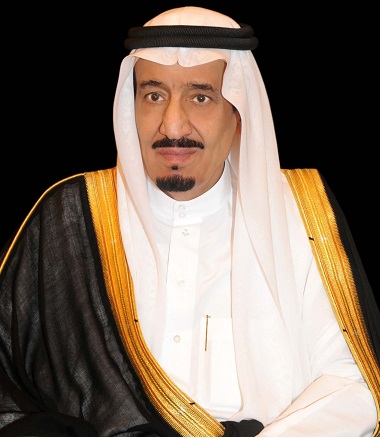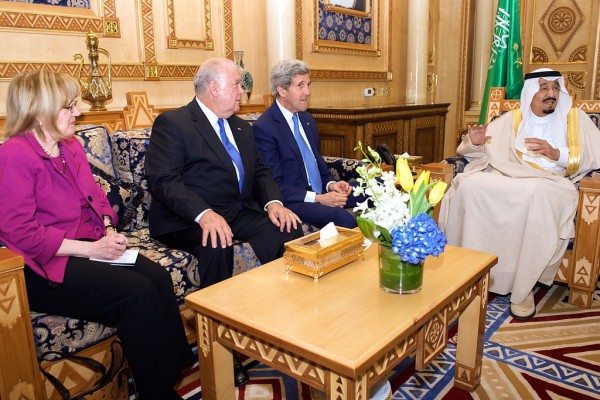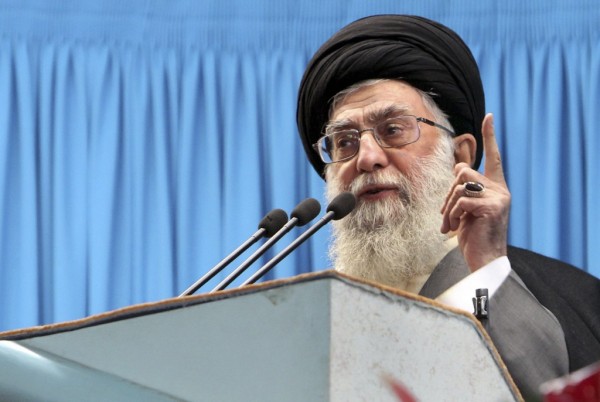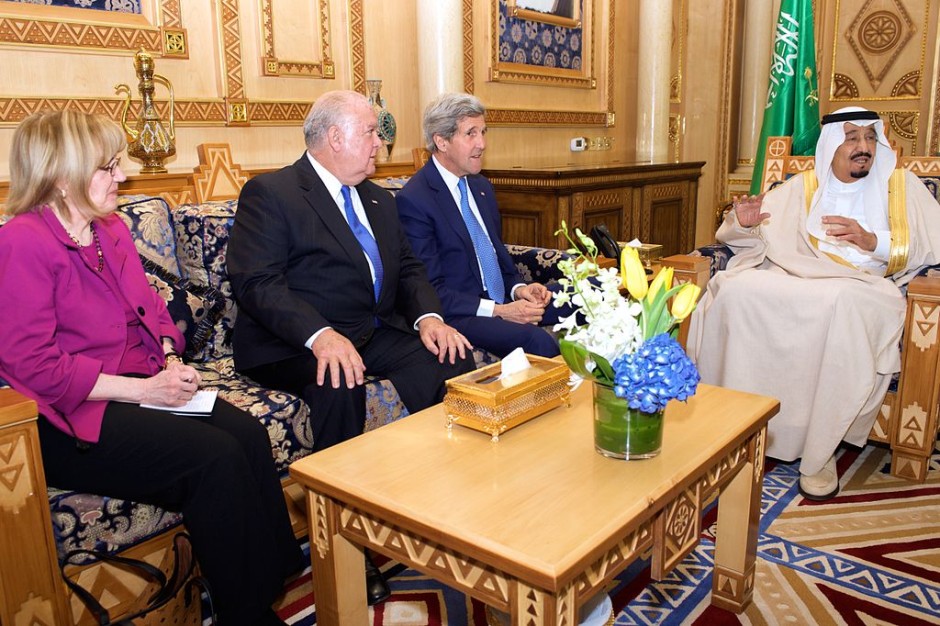Iran has been slowly tightening its grip on a number of Middle Eastern countries, three of which border Saudi Arabia. It appears the Saudis have had enough.
One sign of the kingdom’s more muscular foreign policy? Saudi Arabia’s new monarch, 79-year-old Salman bin Abdulaziz Al Saud, on the throne just three months, in late April rearranged the kingdom’s line of succession.

He replaced Prince Muqrin bin Abdulaziz as his successor with 55-year-old Muhammad bin Nayef bin Abdulaziz Al Saud, the kingdom’s powerful interior minister.
The 69-year-old Muqrin is the youngest surviving son of Abdulaziz ibn Abdul Rahman Al Saud, the founder of Saudi Arabia. He was close to King Abdullah bin Abdulaziz Al Saud, who died in January. The new crown prince, who is the king’s nephew, is considered a hard-liner and has led a crackdown on Islamic militants within the country. In 2009, he survived an assassination attempt by a militant.
The king’s 34-year-old son, Prince Mohammed bin Salman Al Saud, was named second-in-line to the throne. As defence minister, he has been a vocal advocate of using force against the Iranian-backed Houthi rebels in Yemen.
The two new men face not just Shia Iranian interference throughout the region, but also the spread of Sunni extremism, in particular the Islamic State, which retains its hold on large parts of Iraq and Syria, and seems to be gaining adherents in Libya, Yemen and elsewhere.
They also hold no love for the Muslim Brotherhood, and were pleased when President Mohamed Morsi of Egypt was overthrown in a coup in 2013.
Spearheading a coalition of nine Arab states, the Saudis began carrying out airstrikes in Yemen on March 25. The intervention, named Operation Decisive Storm, began in response to the Houthi offensive in the country, whose president, Abd Rabbuh Mansur Hadi, had fled to Saudi Arabia.
But Operation Decisive Storm hardly lived up to its name. Saudi Arabia and the United Arab Emirates, the two nations that conducted most of the sorties in the skies of Yemen, initially hoped to restore Hadi to power.
Despite the thousands of missions flown, the hundreds of military-related targets that were hit, the thousands killed, and some $300 million worth of damage, the political process in Yemen remains at a stalemate.
On April 21, Saudi Arabia wound up the military operation and announced it was launching Operation Restoring Hope, emphasizing political and peace efforts between the combatants in Yemen. Some military operations continue, however.
The Saudis have also increased their aid to rebel groups fighting in northern Syria against the Iranian-backed government of President Bashar al-Assad.

Saudi leaders have long been frustrated that the United States has not done more to force Assad from power in Syria or to limit Iran’s influence in Iraq. They sense that Washington would like to step back from its obligations in the Middle East, allowing a resurgent Iran to seek hegemony in the region.
The Obama administration was cool to the formation of an Arab coalition against the Houthi rebels and also sought to dissuade the Saudis from launching a ground operation. Saudi Arabia is well aware that the U.S. is reluctant to see an escalation of its power struggle with Iran.

Of course, Tehran is not happy with Saudi Arabia’s new assertiveness. Iran’s supreme leader, Ayatollah Ali Khamenei, has criticized Riyadh’s actions in Yemen, declaring that the kingdom’s traditional caution in world affairs has been abandoned by “inexperienced youngsters who want to show savagery instead of patience and self-restraint.”
The Iranians have even taken to taunting the Saudis of late. General Mohammad Ali Jafari, commander of Iran’s elite Revolutionary Guards, said that Saudi Arabia, by “shamelessly and disgracefully bombing and killing a nation,” was “following in the Zionist regime’s footsteps in the Islamic world.”
He predicted that “the House of Saud will be toppled.”
Henry Srebrnik is a professor of political science at the University of Prince Edward Island.

